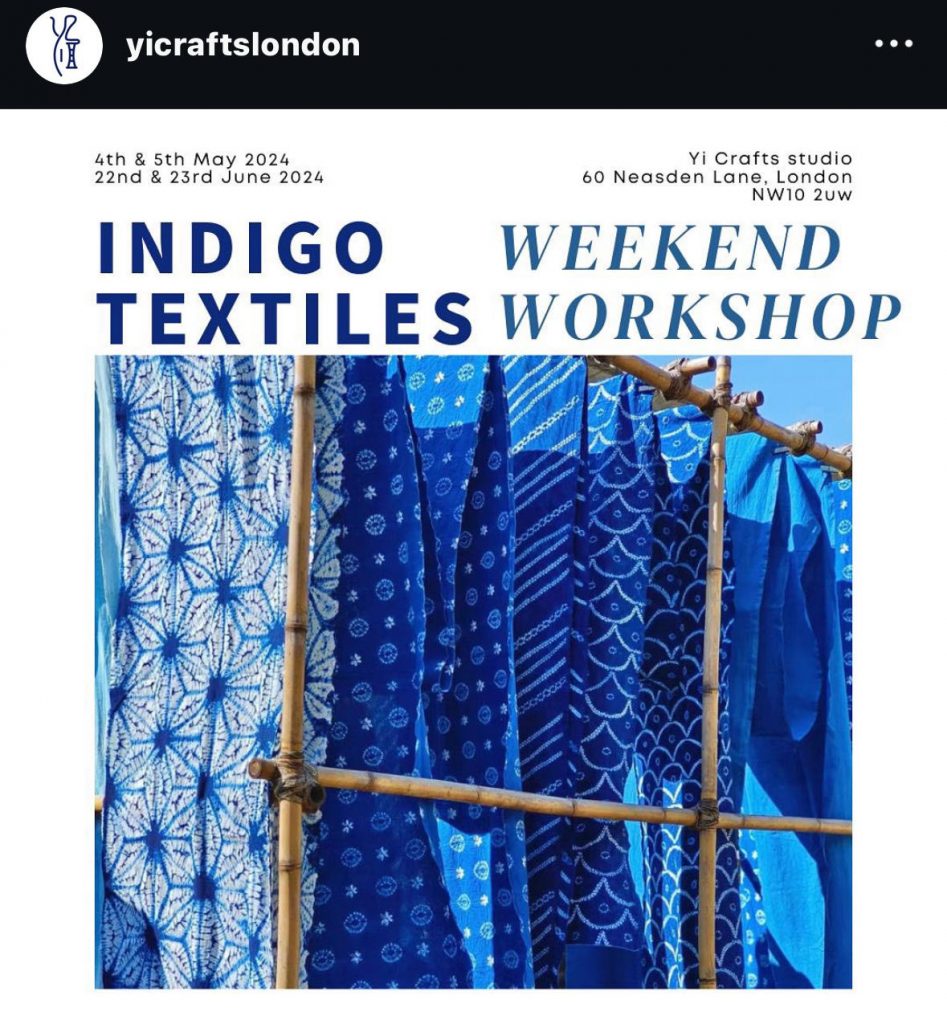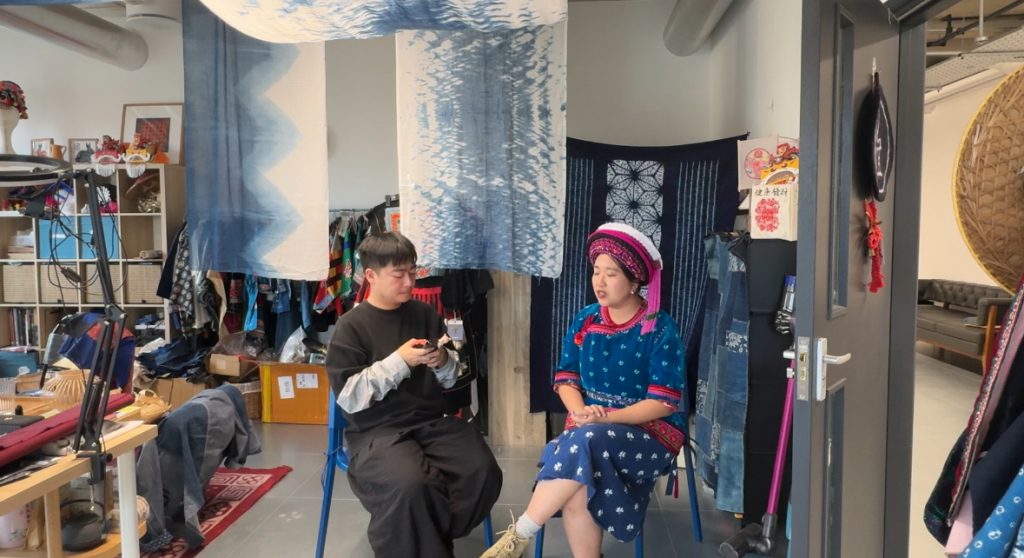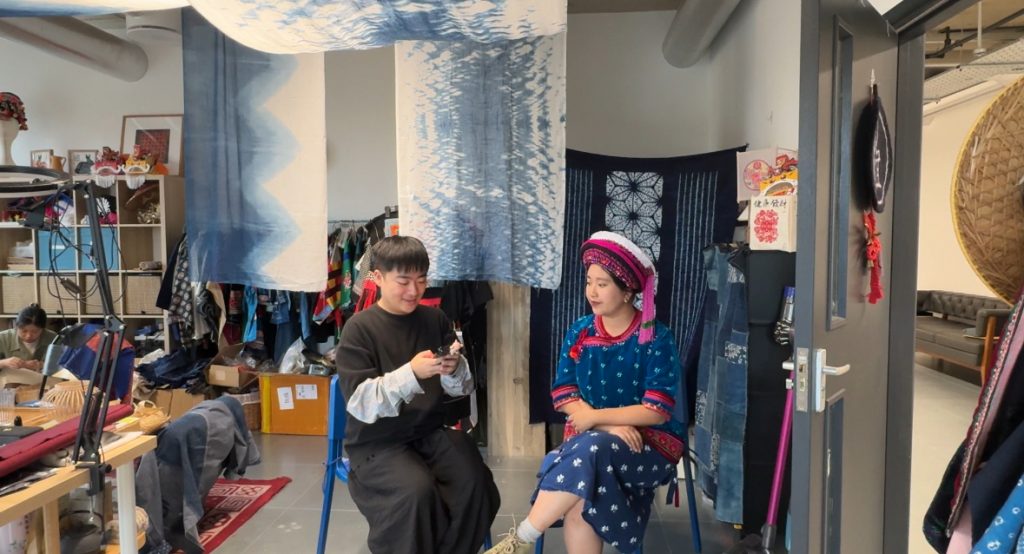Yiran grew up in the Dali Bai Autonomous Region, Yunnan Province, in a traditional textile family; her whole family is Bai people. Pursuing broader life experience and career opportunities, she moved to London and has lived there for ten years. While studying in London, Yiran studied fashion for a year and switched to costume making. Now, she has opened her studio, focusing on traditional content in China and South Asia, and is also a lecturer in film costume-making at the university.

(Her social: @Yicraftlondon)
She wanted to set up a studio to convey his own ethnic culture and let the world hear the voices of China’s ethnic minorities. While studying in the UK, Yiran studied theatrical costume-making. Although this course is called costume, all the knowledge taught in the school is based on Western aesthetics and is not so international. Since then, Yiran has had the idea of bringing tie-dyed fabrics made of indigo, the intangible cultural heritage of the Bai people, to school to make clothes. At that time, Yiran’s tutor was very surprised and liked it. Her tutor taught Yiran’s first workshop in London during her student period, laying the foundation for Yiran to set up a studio and spread ethnic minority culture internationally.


Key Point of the interview:
Many international brands use Chinese elements, especially in clothing design. People often think of Chinese elements such as red, dragons, and dumplings, but they are only a small part of Chinese elements. They need to appreciate the diversity of Chinese culture. As a country with a rich culture, China has many unique cultural resources, especially the culture of Chinese ethnic minorities. The 56 ethnic minorities have their own characteristics and rich traditional arts, costumes, music, and festivals, most of which are Chinese intangible cultural heritage.
Culture cannot be touched or smelled. It is just like everything that we do.
So Yiran wants to use the traditional crafts of Chinese ethnic minorities as a medium to communicate with everyone. It is not just the process of making, but also the cultural background stories behind it, the stories of her hometown. Every workshop has people from different countries and cultural backgrounds participating. Yiran pointed out that her workshop has also become a platform for everyone to exchange culture. She believes that the spread of culture should not rely on loud calls or showing strength but should be carried out in an environment of equality and respect. Under such conditions, participants can genuinely realize and learn about each other’s culture. So this is also the most essential part of her workshop.
On the topic of cultural appropriation, culture can be likened to a river that flows around the world, is adopted by people in different countries, and develops in different forms. Although the forms presented in other places differ, there are often many similarities. The key is that we should respect various cultures instead of trying to correct or change them. Like a newly sprouted seedling, we should protect and let it grow naturally instead of forcibly pruning it. When discussing cultural appropriation, respect is the most important thing – not only for the culture itself but also for the people behind it. When you get inspiration from a particular culture, you should remember and mention the essence of this culture, and even more so, remember the people who have made efforts for this culture. For example, the Bai women in the textile factory work 8 hours a day, 5 days a week, all year round; their hard work allows this culture to be passed on and spread. Yiran said that his London workshop is not just teaching; it is part of history because history is accumulated from every moment, and we can pass on history. Imagine 20 years later, when your child asks you what this piece of cloth in your hand is and what it means, you can proudly tell him that it is indigo tie-dyed cloth from Yunnan Bai Autonomous Region. Everyone can be a disseminator of culture. The key is to start from the perspective of appreciating and respecting culture.